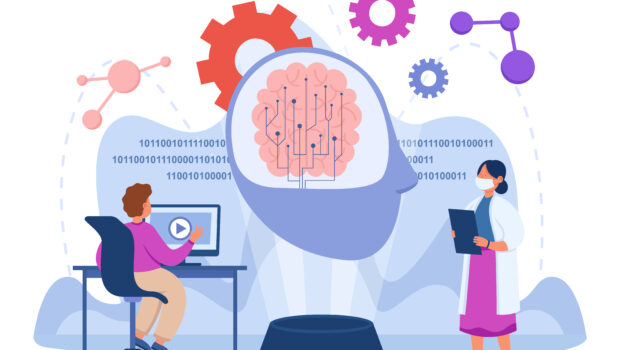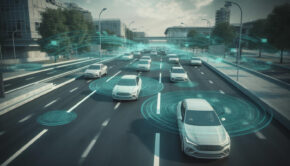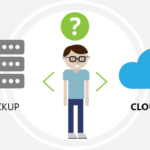How Artificial Intelligence is Impacting Education Sector
Artificial Intelligence (AI) is a machine visualization of human brainpower systems by machines, especially computer programs designed to perform different tasks. AI has significantly impacted several fields, from space explorations, security, health, banking services, communication, and media, to the education sector to many other areas.
We’re going to major in how artificial intelligence has impacted the education sector. Artificial intelligence in the education sector has empowered both students and teachers. AI has also enabled solutions to various problems in the education sector by offering multiple teaching and learning opportunities in different formats.
Artificial intelligence helps institutions design curriculum-based knowledge and noticeable pilot changes in handling processes.
Artificial Intelligence and Education
In this modern world, the way students are taught and their studies are offered very differently from how it was some years ago. Artificial Intelligence nowadays provides an exciting way for how teachers can help their students learn through very organized and customized learning materials in a friendly manner and environment.
Artificial Intelligence has enabled the automation of administrative tasks, allowing institutions to reduce the time to complete everyday processes and tedious tasks.
How AI Has Impacted Education Sector
Here are some significant ways artificial intelligence has impacted the education sector.
1. Personalized Learning by Artificial Intelligence
Quite some educational programs have been developed to increase and optimize the learning speed and the instructional ways for each student’s needs. These artificial intelligence-powered applications allow students to do free online exam tests after customized learning where the teachers give tailored and personalized responses to their questions.
Teachers can also break down the learning sessions into favorable study guides and use flashcards to allow students to interact with the principles more easily to retain and understand. Through this form of learning, students will be taught based on their skills as individual students and offer solutions to the challenges they encounter during class time.
2. Secure Online Exams
Several universities and institutions worldwide use AI-powered assessment tools allowing their students to assess the free online exam tests. Once the students wind up on their exam test, they can evaluate their results online.
The unique thing about these online exams is that they’re more secure than regular examinations. They offer innovative configurations and settings like start and completion times you can use when assigning tests to the chosen users.
Online exams allow limited availability and create different groups where a random question for each group is selected, preventing students from engaging in cheating.
As online exams save teachers lots of time, avoid human error, and reduce their work, several institutions still doubt their credibility because there are still chances of students cheating while undertaking the exams.
3. Chatbots
A chatbot is an online software application used to perform an online chat conversation via text-to-speech or text. It provides direct interaction with live human customer care agents. Chatbots automate conversations between students to tutors in an interactive way by providing live chat solutions like messaging platforms.
The next generation of education is rapidly turning chatbots into an irreplaceable devices. A team of policymakers wanted chatbots to maintain the communication between computers and students, enabling them to have a wide range of advantages such as;
· Instant feedback involving test evolution with 93% precision and less time than instructors.
· Calculations and redundancy are used to improve memorization of spaced interval learning.
· Self-guided learning tracks allow students to improve their presentation and guide them depending on their self-needs.
Chatbots outfit teachers with new methods of engaged learning while reducing their workload and increasing general performance.
4. Virtual Learning Environment
Artificial intelligence is powering platforms to digitalize textbooks, allowing students to access them from various devices at any time.
Digitalizing the textbooks helps learners who cannot physically attend classes to read notes and even allows international students to learn other courses unavailable in their countries. This act opens an opportunity to a more significant number of students around the world.
The added advantage of these platforms is that they can easily translate learning materials to different languages facilitating learning for all non-English speakers. These platforms create an interactive forum for students from other locations, ages, and grades.
5. Artificial Intelligence-Enabled Administrative Task Automation
Artificial intelligence has enabled the automation of administrative tasks that teachers previously handled. Institutions took more time to plan for classes, perform other essential activities, and communicate with students.
Technology with the help of artificial intelligence has allowed the automation of paperwork processing and classification, meaning that administrators and teachers no longer have to handle the tasks manually. Technology gurus have predicted that AI could create more efficient admission and enrolment systems in the coming years.
6. AI Improved Grading System
In the past few years, teachers often spent a lot of time reviewing students’ homework, analyzing grading exams, and giving feedback to their students. Artificial intelligence has been helpful because it automatically generates the grades after keying in the results.
Technologists and innovators should know that technology cannot entirely replace the human grading system. However, it can help. Teachers can automate grading for several choices and even fill in the free tests of almost any kind. Such technology can analyze students’ answers, provide helpful input and evaluate learners’ knowledge.
Artificial intelligence systems are also getting close to evaluating students’ writing skills.
Other Emerging Trends of AI on Education
There are various emerging trends of artificial intelligence in education, such as virtual reality, 3D printing, and many more. These futuristic ideas keep getting executed more in classroom set-up, and more trends will continue.
Ed-tech tools show the potential of technologies for improving education trends in the education sector. The education sector requires consistent information sharing, sharing information, and coordinated efforts with students, personnel, and experts globally.
To Wind Up
Groundwork has shown that youths are bound to take data from online screens instead of books. Likewise, there has been a significant rise in high-tech or tech schools that accepts human collaboration with technology to keep youths engaged and eager to learn.
Cover Image by Freepik







![Why Are Keywords So Important for Your Online Sales? [Infographic]](https://technofaq.org/wp-content/uploads/2017/11/Why_Are_Keywords_So_Important_for_Your_Online_Sales-150x150.png)








